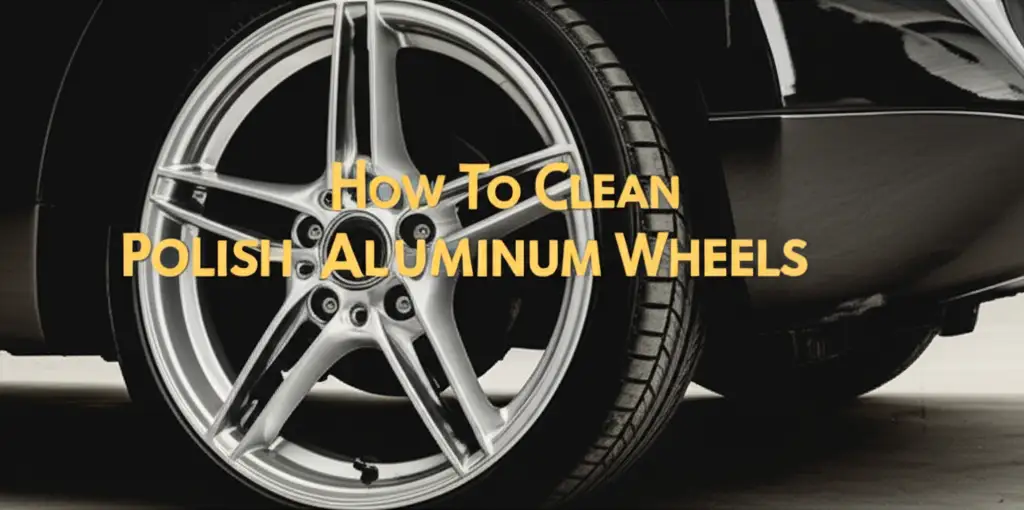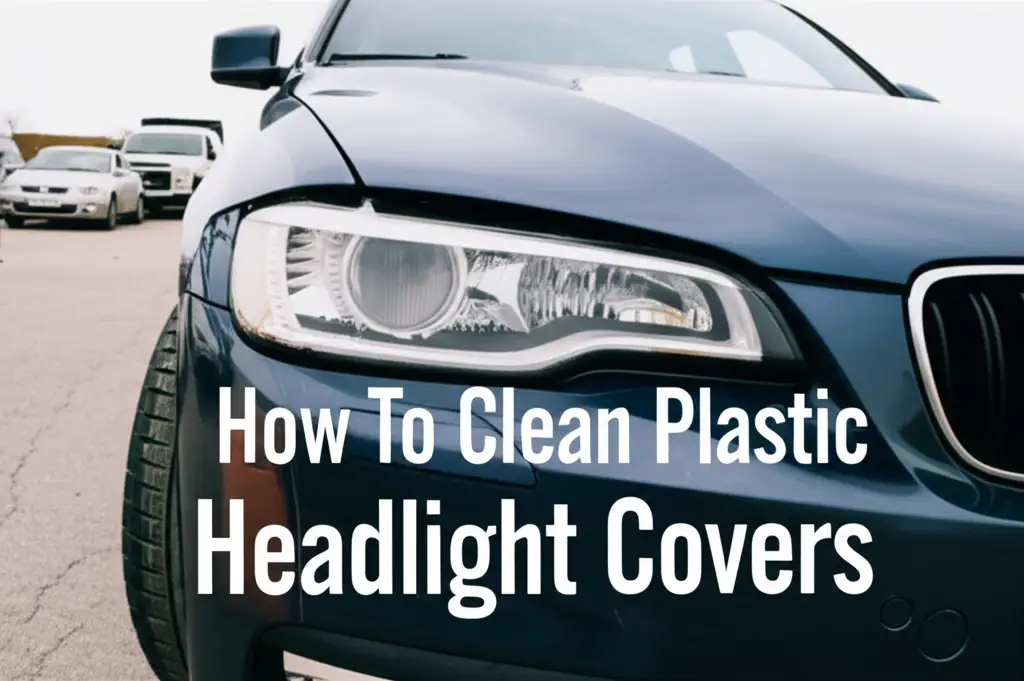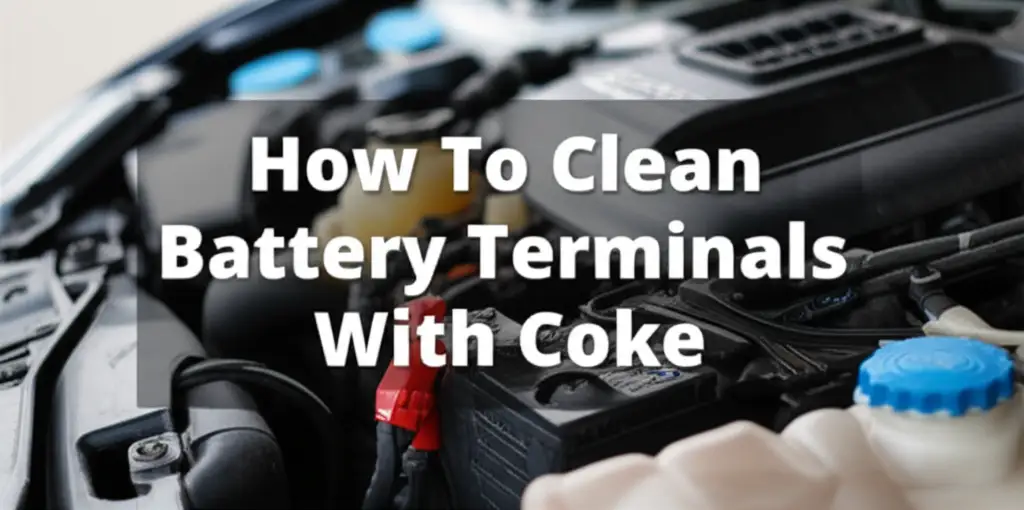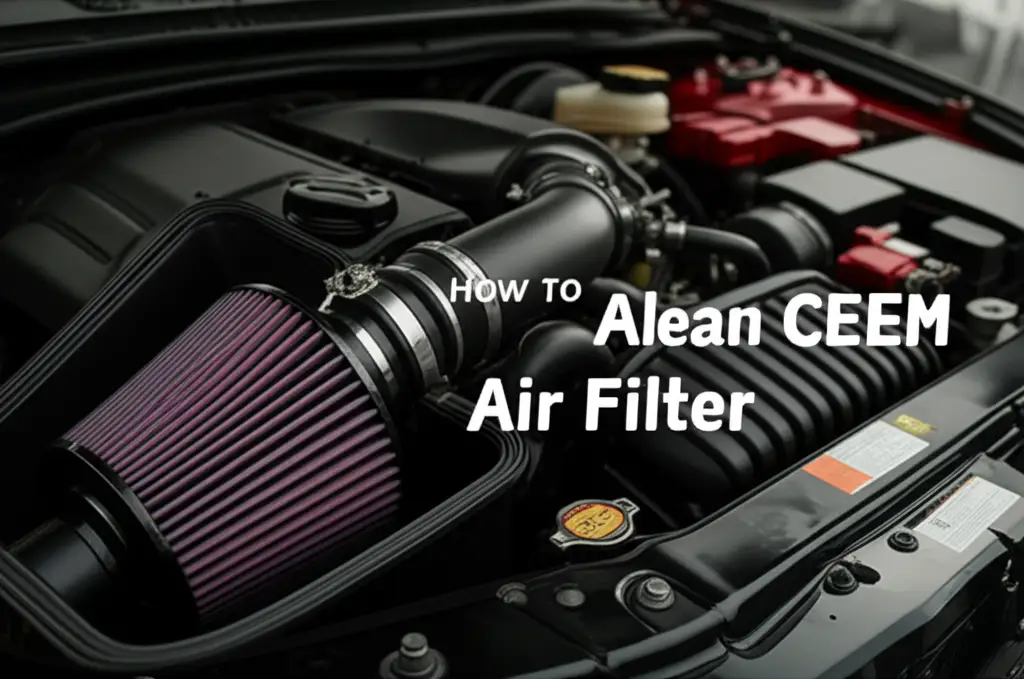· Automotive Care · 11 min read
How To Clean Oxidized Aluminum Wheels
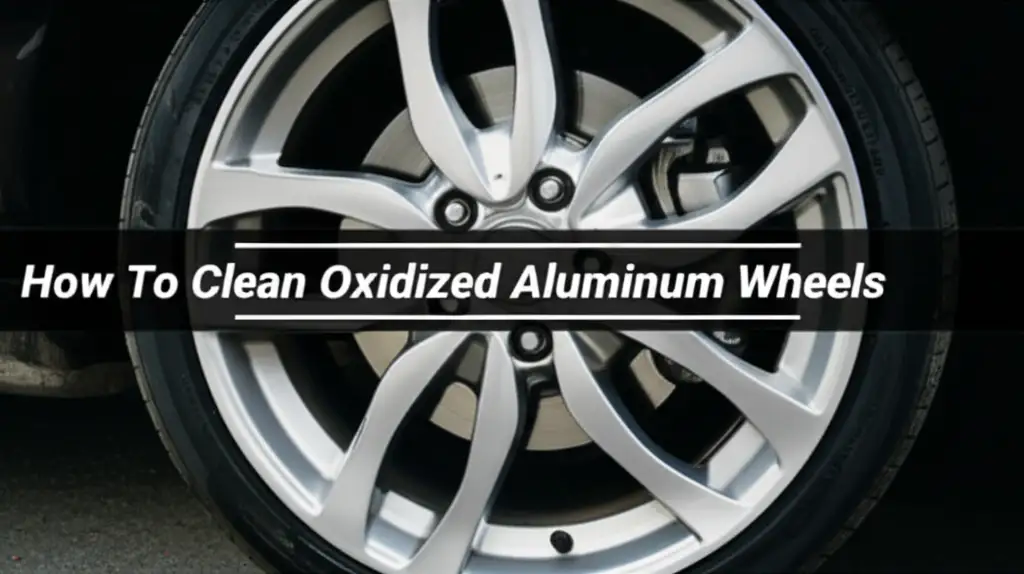
Restore Your Shine: How to Clean Oxidized Aluminum Wheels
Do your car wheels look dull and discolored? That cloudy, chalky appearance often means your aluminum wheels have oxidation. Aluminum is a popular material for wheels because it is light and strong. However, it reacts with oxygen and moisture over time. This reaction creates aluminum oxide, which looks like a white, powdery film. Oxidized aluminum wheels detract from your car’s look. They also lose their protective coating. Cleaning them properly can restore their appearance and prevent further damage. I will show you how to clean oxidized aluminum wheels effectively. We will cover the tools you need and the best cleaning methods. We will also discuss how to protect your wheels in the future.
Takeaway:
- Identify oxidation early to prevent severe damage.
- Gather the correct tools and pH-neutral cleaners.
- Pre-rinse and degrease wheels thoroughly before cleaning.
- Use gentle methods for light oxidation and specific products for heavier cases.
- Always protect your wheels with a sealant after cleaning.
- Avoid harsh chemicals and abrasive tools to prevent damage.
Oxidized aluminum wheels can be cleaned by first rinsing off loose dirt. Then, apply a specialized aluminum wheel cleaner or a DIY solution like a vinegar and baking soda paste. Scrub the affected areas with a soft brush or microfiber cloth. Rinse thoroughly and dry. Finish with an aluminum polish and protective sealant for lasting shine.
Understanding Oxidation on Aluminum Wheels
Aluminum wheels are a common choice for many vehicles. They offer a good balance of weight and durability. However, aluminum naturally reacts with its environment. This reaction is called oxidation. It causes the metal to lose its shine and develop a dull, powdery coating.
Oxidation on aluminum wheels happens when the bare metal comes into contact with oxygen and moisture. Road salt, brake dust, and harsh chemicals speed up this process. The protective clear coat on many aluminum wheels can also chip or wear away. This exposes the aluminum to elements. Early detection of oxidation is important. A light, milky film is easier to remove than deep, pitted corrosion.
Essential Tools and Supplies for Wheel Cleaning
Cleaning oxidized aluminum wheels needs the right gear. Using the correct tools makes the job easier and prevents damage. I always start by gathering everything before I begin. This saves time and ensures a smooth process.
You will need a few key items. First, get a good water source, like a garden hose with a spray nozzle. Buckets for soap and rinse water are also essential. Choose specific brushes for wheels; soft bristled brushes are good for surfaces, and lug nut brushes reach tight spots. Microfiber towels are best for drying and polishing.
Choosing the Right Cleaning Products
Selecting the right cleaner is crucial. Avoid strong acid-based cleaners unless you know exactly what you are doing. These can etch aluminum and damage the clear coat. Look for pH-neutral wheel cleaners designed for aluminum. These are safer and very effective. For light oxidation, you can even use common household products. For instance, a mix of vinegar and baking soda can work wonders. This gentle combination helps lift light oxidation without harsh chemicals. I have seen great results using this method on minor spots. You might also need a dedicated aluminum polish to restore shine. A wheel sealant or wax will protect the wheels after cleaning.
Preparing Your Wheels for Deep Cleaning
Before you clean, prepare your wheels carefully. This step helps the cleaning products work better. It also protects other parts of your vehicle. A good start makes the rest of the process much easier.
First, park your car in a shaded area. This keeps the wheels cool. Cleaning hot wheels can make products dry too fast. This can leave streaks or spots. Make sure the wheels are cool to the touch. Then, give them a good initial rinse with water. Use strong water pressure from your hose. This washes away loose dirt, grime, and brake dust. This initial rinse prevents scratching the wheels during scrubbing.
If your wheels have a lot of grease or heavy grime, a degreaser helps. Spray it on and let it sit for a few minutes. Then, rinse again thoroughly. Some people choose to remove the wheels from the car for the best access. This allows you to clean all sides of the wheel. If you leave them on, cover your brake calipers and rotors if you plan to use strong cleaners. This protects them from accidental contact.
Step-by-Step Cleaning Methods for Oxidized Aluminum
Now, we get to the main part: cleaning the oxidation. The method you use depends on how severe the oxidation is. Always start with the least aggressive method. You can move to stronger solutions if needed.
DIY Solutions for Light Oxidation
For wheels with light oxidation or a cloudy appearance, simple household items often work well. I often recommend these methods for a first attempt. Mix equal parts white vinegar and water in a spray bottle. Spray the solution onto the oxidized areas. Let it sit for a few minutes. Then, gently scrub with a soft brush or microfiber cloth. Rinse thoroughly with water. For slightly tougher spots, a paste of baking soda and water can be effective. Apply the paste to the affected area. Let it sit for 5-10 minutes. Scrub gently with a non-abrasive pad or cloth. You can learn more about cleaning with these common items here. Rinse completely to remove all residue. This method is safe for your wheels and the environment.
Commercial Cleaners for Tougher Stains
When oxidation is more stubborn, commercial wheel cleaners are useful. Always choose a product specifically designed for aluminum or clear-coated wheels. Look for “pH-neutral” or “acid-free” formulas. I find these safest for long-term wheel health. Spray the cleaner evenly onto a cool, wet wheel. Follow the product instructions for dwell time, usually 2-5 minutes. Do not let it dry on the wheel. Use a wheel brush to agitate the cleaner. Pay attention to all nooks and crannies. The cleaner will loosen the oxidation. Then, rinse the wheel thoroughly with high-pressure water. Make sure no cleaner remains. For general aluminum care, exploring methods for similar surfaces can be helpful, such as when you clean cast aluminum patio furniture.
After cleaning, drying is important. Use a clean, dry microfiber towel. This prevents water spots. Once dry, you might notice that some oxidation remains. This means you need to move to the next step: polishing. An aluminum rims household products cleaning guide can give you more insights into basic care.
Tackling Stubborn Oxidation and Pitting
Sometimes, oxidation goes beyond the surface. It can create pitting or deep discoloration. This requires more aggressive methods. This part of the process aims to smooth the aluminum surface. It also removes deeply embedded contaminants.
For severe oxidation or light pitting, wet sanding is an option. This process involves using very fine grit sandpaper with water. You need specific automotive-grade sandpaper. Start with a higher grit, like 1000 or 1500, and work your way up to 2000 or 3000 grit. Always keep the surface wet while sanding. Use light pressure and consistent strokes. This removes the outer layer of oxidized aluminum. It also smooths out imperfections. This method is labor-intensive. It also requires careful attention. Improper sanding can cause damage.
After wet sanding, the wheel will look dull again. This is normal. The next step is to use a heavy-duty aluminum polish. Apply a small amount of polish to a microfiber applicator pad. Rub it onto the wheel in small sections. Use firm, circular motions. The polish contains abrasives that refine the surface. They bring back the shine. You may need to repeat this process several times. Use clean sections of the cloth as you go. Buff away the polish residue with a clean microfiber towel. This process can be similar to restoring other oxidized metals, such as cleaning oxidized David Yurman jewelry. If the pitting is very deep, professional wheel repair might be the best option. They have specialized tools and techniques. They can restore wheels that are beyond DIY repair.
Protecting Your Clean Aluminum Wheels
You have put in the hard work. Your aluminum wheels are now clean and shiny. The next crucial step is to protect them. This prevents future oxidation and keeps them looking good longer. Protection makes your cleaning efforts last.
There are several ways to protect your wheels. A good quality wheel sealant is an excellent choice. These sealants create a clear barrier over the aluminum. This barrier repels water, dirt, and brake dust. It also prevents oxygen from reaching the metal. Apply the sealant evenly to the clean, dry wheels. Follow the product’s instructions for application and curing time. Typically, you apply it with an applicator pad. Then, you buff it off with a clean microfiber towel.
Another option is a car wax designed for wheels. While car wax offers some protection, wheel sealants usually last longer. For maximum durability, you can also consider ceramic coatings specifically for wheels. These coatings provide a very hard, durable layer. They offer superior protection against environmental damage. Regular maintenance is also key. Rinse your wheels frequently with water. This removes loose dirt and contaminants before they can cause damage. Using a mild car shampoo during your regular car wash will help. This ongoing care will keep your wheels shining for years. This protective barrier is similar to how you might protect other treated aluminum surfaces, like preventing tiger stripes on aluminum gutters.
Common Mistakes to Avoid When Cleaning Aluminum Wheels
Cleaning oxidized aluminum wheels requires care. Making mistakes can damage your wheels. It can also make the oxidation worse. I want to help you avoid common pitfalls. Knowing what not to do is as important as knowing what to do.
First, never clean hot wheels. The heat can cause cleaners to dry too quickly. This leaves streaks and stains that are hard to remove. Always let your wheels cool down before you start cleaning. Second, avoid harsh acid-based cleaners. These chemicals can etch the aluminum. They can strip clear coats. This exposes the metal to faster re-oxidation. Stick to pH-neutral or aluminum-specific cleaners.
Third, do not use abrasive pads or steel wool. These materials will scratch the aluminum surface. This creates more areas for oxidation to form. Use only soft brushes, microfiber cloths, or non-abrasive pads. Fourth, skipping the protection step is a big mistake. Without a sealant or wax, your wheels will oxidize again quickly. Apply a protective layer after every thorough cleaning. Finally, do not let cleaners dry on the wheels. Always rinse thoroughly and quickly after application. This prevents spotting and residue. Following these tips will help you keep your wheels looking great without damage.
FAQ Section
How often should I clean oxidized aluminum wheels?
The frequency depends on driving conditions and climate. If your wheels show light oxidation, clean them as soon as you notice it. For preventive care, wash your wheels thoroughly every two to four weeks. Apply a sealant every few months to maintain protection.
Can I use car wash soap on oxidized wheels?
Car wash soap is good for routine washing. It removes light dirt and grime. However, it is not strong enough to remove existing oxidation. You need specialized aluminum wheel cleaners or specific DIY solutions for oxidation removal. Use car wash soap for regular maintenance after deep cleaning.
Is it safe to use acid wheel cleaners?
Acid wheel cleaners are very strong. They can quickly remove stubborn brake dust and some oxidation. However, they are generally not safe for all aluminum wheels, especially those with clear coats. They can etch the metal or strip the clear coat. It is best to use pH-neutral or acid-free cleaners.
What causes aluminum wheels to oxidize?
Aluminum oxidizes when it reacts with oxygen and moisture in the air. This process is sped up by road salt, harsh chemicals, brake dust, and environmental pollutants. Damage to the wheel’s clear coat exposes the raw aluminum, making it more prone to oxidation.
Can you reverse severe oxidation?
Severe oxidation, especially with pitting, is difficult to fully reverse. Light to moderate oxidation can be significantly improved with proper cleaning and polishing. Deep pitting often requires professional wheel repair services. These services can resurface and re-coat the aluminum.
How long does the cleaning process take?
The time varies based on the severity of oxidation and the method used. A light cleaning might take 30-60 minutes per wheel. For severe oxidation involving wet sanding and polishing, it could take several hours per wheel. Patience and thoroughness are important for good results.
Conclusion
Cleaning oxidized aluminum wheels can seem like a big job. However, it is very rewarding. You can restore your wheels’ original shine with the right approach. We covered everything from understanding oxidation to applying protective coatings. Remember to start with a good rinse. Use the right cleaning products for the oxidation level. Always apply a sealant to protect your hard work. This proactive approach not only makes your car look better. It also extends the life of your wheels. Keep your wheels clean and protected. Your car will thank you with a brilliant shine. I encourage you to try these methods. Your wheels can look new again.
- oxidized wheels
- aluminum cleaning
- car detailing
- wheel maintenance

